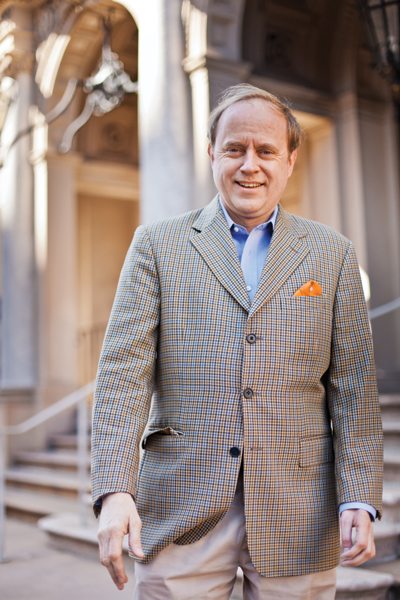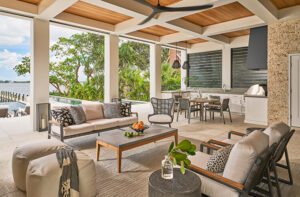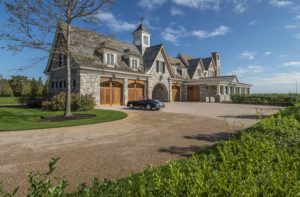James Hall
May 1, 2012
Text by Kyle Hoepner Photography by Chris Vaccaro
 James Brayton Hall has since 2010 served as executive director of one of the Northeast’s most active and successful historical preservation organizations, the Providence Preservation Society. New England Home’s Kyle Hoepner queried him recently about his past, his mission and the importance of preservation to our collective sense of self.
James Brayton Hall has since 2010 served as executive director of one of the Northeast’s most active and successful historical preservation organizations, the Providence Preservation Society. New England Home’s Kyle Hoepner queried him recently about his past, his mission and the importance of preservation to our collective sense of self.
Kyle Hoepner: How did you find yourself heading PPS?
James Hall: I have degrees in both architecture and landscape architecture, so I have always been very passionate about the built environment. I spent many years at Rhode Island School of Design, where I was director of campus design and later assistant director of the RISD Museum. Most of RISD’s buildings are historic, and art students can be particularly tough on their surroundings. It was a great opportunity to try to be a good steward of a diverse collection of buildings, allowing them to meet the practical needs of the students as well as the symbolic needs of the college. The chance to do much the same thing for the entire city seemed too good to pass up!
KH: Has your own history as a Providence native helped forge an awareness of preservation issues there?
JH: I think it certainly helped me hit the ground running in this position. It’s nearly impossible to grow up in Providence and not be aware of its architecture, especially if you are an architecture geek like me. I like to say that I know every building in Providence—a bit of an overstatement, but not much. It’s easier to make a case for preserving something if you know it well.
KH: Can you give us a quick primer on PPS’s origins and history?
JH: PPS was formed in 1956 by a powerful coalition of old patrician Yankee families and educated young families living on the East Side. They were responding to two threats—increasing demolitions of eighteenth- and early nineteenth-century houses on College Hill by Brown University, and the looming specter of “urban renewal” funded by the federal government. PPS was one of the earliest organizations founded with the intention of preserving a neighborhood rather than an iconic structure like Mount Vernon or Monticello.
Our College Hill Study of 1959 was the first time the government accepted that historic preservation could be used as a tool of urban revitalization. Until PPS changed the discussion, “renewal” meant “demolition.”
KH: Are there things about the city that make it particularly suitable for preservation efforts?
JH: When I took the job, a friend said, “If you’re going to be in preservation, there’s no better place than Providence, because there’s so much good stuff.” In 1900, Providence had the highest per capita income in the U.S. That wealth produced a lot of very beautiful domestic and commercial architecture. Later, as its fortunes declined, Providence was spared many of the indignities visited on other great nineteenth-century cities (Richmond, Virginia, comes to mind). We’re the right size, too, so that each building you renovate makes an immediate and substantial impact on its neighbors.
KH: First seeing downtown Providence in the very early 1980s, I would never have dreamed it could look as it does today. What has been PPS’s role in the renaissance of the city’s center?
JH: We’ve been cheerleader, educator, advocate, convener and, when necessary, thorn in the side of our elected officials! To be effective, we have to operate on multiple parallel tracks—in the space of one day I can be testifying before the Senate Finance Committee about the future of the lands previously occupied by Route 195, and meeting with a homeowner about participating in our spring house tour (now in its thirty-third year). We do everything we can to remind people that preservation makes Providence a nicer, safer place to live in, and is also a great economic generator.
KH: I know one focus for you right now is the historic Arcade building on Weybosset Street—which has already been “saved” once before…
JH: The 1828 Arcade is America’s oldest enclosed shopping galleria, and one of our city’s greatest architectural treasures. Providence is fortunate that the developer who currently owns the building cares deeply about it. The owners have an innovative plan to reopen it with retail once again on the first floor, but with tiny “micro-apartments,” aimed at students and young urban residents, on the upper levels.
KH: You’ve also been working with the city on a new zoning plan?
JH: Yes—it’s going to be a great plan. The very talented staff of the city Planning Department has worked hard, and we have also worked assiduously with neighborhood groups to get everything right. We still believe that the ordinance needs to have stronger language protecting our historic fabric from shortsighted demolition, and we have had lengthy discussions about the pros and cons of a public design-review process. But this new ordinance is going to shape the way the city develops for at least the next decade.
KH: What about the Jewelry District and the waterfront, especially now that the “Iway” project has removed the old elevated sections of I-195?
JH: It has been very much in the media, which is a great chance to remind people that the shaping of a city should be a deliberate act. The land where the highway was removed spans the Providence River and touches three established historic neighborhoods: Fox Point, College Hill and the Jewelry District. The real challenges are going to be getting the scale of development right and making certain that the needs of the automobile commuter don’t trample the desires of the neighbors, pedestrians and city residents who rely on the riverfront as recreational green space.
KH: What do PPS’s experiences teach us about preservation efforts across New England and elsewhere?
JH: One has to be like the Marines, “ever vigilant!” Preservation is never complete. Preservation reminds us of what is special and unique about the place in which we live. Our sense of ourselves as a nation and a diverse culture is made visible in our historic buildings.
KH: What have been PPS’s greatest successes so far?
JH: The postcard view would suggest Benefit Street, which will always be our calling card, and the Armory District and Broadway, two adjacent late nineteenth-century neighborhoods on Providence’s West Side saved in the 1970s and 1980s. But our real game changer has been the establishment of historic districts, where public design review happens. I expect we’ll see more historic districts established in Providence in the next ten years.
KH: In the long run, what would you like to see as your legacy for the organization and for the city?
JH: Two things. I hope we’re communicating that preservation has always been a visionary endeavor—it’s not just about Ionic columns and correct paint colors; it’s about looking ahead and trying to support the qualities of the places we live in that make our daily lives richer and more profound. I also hope that people will come to understand that preservation benefits everyone. Our historic buildings, grand and modest, remind us of who we are. Providence became a great city one building at a time, and we all have a stake in seeing to it that we value and continue to carefully curate this remarkable collection. •
Editor’s note: For more information about the Providence Preservation Society and its upcoming Festival of Historic Houses, visit the PPS website at www.ppsri.org.
Share
![NEH-Logo_Black[1] NEH-Logo_Black[1]](https://www.nehomemag.com/wp-content/uploads/2022/08/NEH-Logo_Black1-300x162.jpg)








You must be logged in to post a comment.